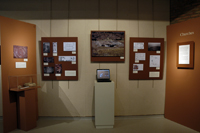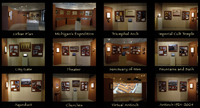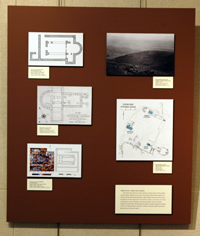
Duderstadt Gallery: Section 10 - Churches
The so-called Church of St. Paul, along
with three other churches—two in the city and one at the nearby
Sanctuary of Mên Askaênos—identify Antioch as an important
center of Christianity in Asia Minor. Christianity was introduced into
Antioch in the 1st century AD by St. Paul during his first missionary
journey. As chronicled in the Acts of the Apostles, Paul met with mixed
success in Antioch. Converting more of the city’s Gentiles than
Jews, he embarked on his broader mission of spreading the word of God
to the non-Jewish populations of Asia Minor.
With the rise of Christianity, churches became the recipients of substantial
monetary donations. The richly ornamented 4th-century Church of St. Paul
was the seat of a bishop. With its marble columns and intricate mosaic
floor, this basilica visibly proclaimed the special status of wealthy
donors and of Antioch as a leading city of Christian Asia Minor.
The Michigan team excavated the Church of St. Paul in 1924, and later
Turkish archaeologists further explored the church, consolidated the floor
mosaic in the nave, and cleared adjacent ecclesiastical structures. Every
year, thousands of pilgrims travel to Antioch to visit this church. In
future years a second large basilica may be on their itinerary. Discovered
in 2001 by two Russian scientists using a magnetometer, this basilica,
which lies over part of the earlier Roman bath complex, awaits excavation.



